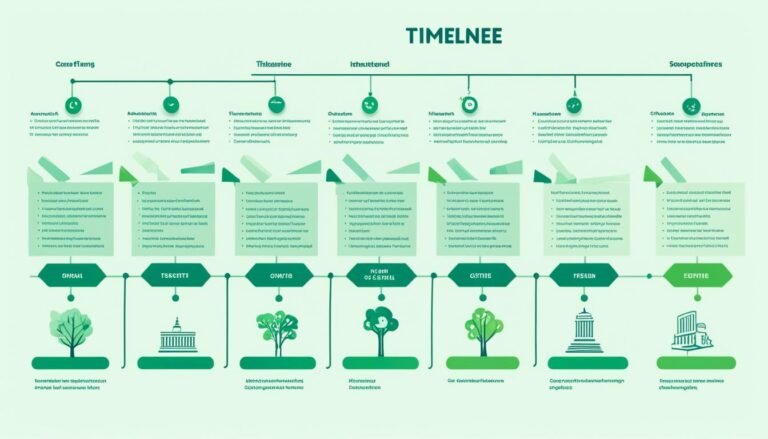Understanding Capital Requirements: A Guide for Irish Financial Institutions
Do you know that Ireland’s retail banking sector now has only three banks left? This change happened after KBC and Ulster Bank left in 2023. It shows how important financial system stability is. It also shows the critical role that capital requirements have in keeping the Irish financial regulation strong and solid.
After the 2008 financial crisis, the European Union worked for a safer banking system. They made a Single Rulebook that includes rules for all Member States, Ireland included. The Capital Requirements Directive IV (CRDIV) and Capital Requirements Regulation (CRR) are key rules. They set the minimum money banks must keep and help reduce big risks.
The Central Bank of Ireland (CBI) makes sure Irish banks follow these rules. It is like the boss for banking here. Working closely with the European Central Bank (ECB), it helps keep an eye on things. Rules like CRDIV/CRR and Bank Recovery and Resolution Directive (BRRD) became Irish law in 2014 and 2015. These laws made sure banks in Ireland are stronger. They made rules on how much extra money banks should keep, which makes the whole banking system safer.
Key Takeaways
- The Irish banking sector has been reduced to three banks, highlighting the need for robust capital requirements.
- Post-2008 crisis, the EU mandated a safer banking system through the Single Rulebook.
- Key legislative texts like CRDIV and CRR have set minimum capital requirements and introduced macroprudential tools.
- The Central Bank of Ireland ensures compliance with these regulations.
- The regulations aim to enhance financial system stability within the Irish financial regulation framework.
Introduction to Capital Requirements in the Irish Banking Sector
The Irish banking sector has changed a lot since the global financial crisis. New rules and practices aim to make banks stronger. These rules are part of a larger effort across Europe to improve financial safety. Thanks to efforts like using the same rulebook in all EU countries, banking rules are better coordinated across the region.
Background and Purpose
Ireland follows the same banking rules as other EU countries because it’s in the Eurozone. Since the crisis, it has adopted rules focused on preventing future financial troubles. The Central Bank of Ireland is key in making sure these new rules are followed by banks. It also creates its own policies to keep the financial system safe.
Policy and Legislative Framework
The Central Bank of Ireland makes sure banks can handle tough times. It has a plan that involves different ways for banks to keep enough money for emergencies. This plan has several important parts:
- Minimum Pillar 1 requirements
- System-wide average Pillar 2 requirements
- The capital conservation buffer
- System-wide average O-SII buffers
- The Countercyclical Capital Buffer (CCyB) set at 1.5%
- System-wide average estimates of P2G
The Central Bank checks on banks using a system called PRISM. It helps make sure each bank gets the right level of attention and supervision. Ireland also makes sure that banks follow rules closely, with strong penalties for breaking them.
Some agencies, like the Corporate Enforcement Authority (CEA) and the Competition and Consumer Protection Commission (CCPC), are key in making sure banks do right by their customers. They work closely with the Central Bank to oversee and protect people who use bank services.
Ireland is very active in making banking safer across the EU. It takes part in many discussions and actions to make sure banks are more stable. For example, it helped shape rules that came after 2016 to reduce risk in the banking sector, showing its commitment to strong EU standards.
Here is a table that shows the main rules and measures banks in Ireland must follow for safety:
| Component | Details |
|---|---|
| Pillar 1 Requirements | Core minimum capital levels obligations |
| Pillar 2 Requirements | System-wide averages |
| Capital Conservation Buffer | Additional to minimum requirements |
| O-SII Buffers | For systemically important institutions |
| Countercyclical Capital Buffer (CCyB) | Set at 1.5% |
| Probability Risk and Impact System (PRISM) | Supervisory framework |
| BRRD Compliance | Monetary penalties and resolution mechanisms |
Understanding Capital Requirements: A Guide for Irish Financial Institutions
In Ireland, the rules are clear – banks must have enough money to cover risks. This helps keep the financial system safe. There are two main types of rules: Pillar I and Pillar II. Each part ensures banks are strong and stable.
The first pillar says banks need to keep at least 8 cents for every dollar they lend out safely. Out of this, 4.5 cents must be very secure, and 6 cents quite safe. Pillar II then looks closely at each bank to make sure they have exactly what they need, based on their own risks.
Banks in Ireland are smart – they use fancy math to figure out how much money they should have. This advanced system looks at many things like past losses and how likely people are to pay back. The goal is to make the financial system stronger. It also requires them to keep a little extra money as a safety net, just in case.
For Irish banks, the rule is to have 8 cents safe for every dollar they lend, with 4 of these cents being very safe. This keeps their financial health in check. Big bosses at the banks can only put in a little of their own money, to keep things fair. They can’t lend too much money to their friends or families either, to avoid problems.
Ireland’s Central Bank keeps a close eye on the banks, making sure they report everything they should. This means the banks have to regularly share how much money they’ve lent out and how safe it is to get it back. This helps everyone know that the banks are being careful with our money.
In Ireland, a few big banks hold most of the money. This is different from some other places like Germany or the U.K. but similar to countries such as Australia and Canada. The top three banks in Ireland manage almost half of all the money in the banking system. The top two, not including special banks, control 60%.
| Banking Sector Metrics | Details |
|---|---|
| Sector Assets to GDP (1998) | 300% |
| Top 3 Banks’ Share of Assets | 47% |
| Top 2 Banks’ Share (Excluding IFSC Banks) | 60% |
| Capital Adequacy Ratio | 8% |
| Director Fund Cap | 2% |
| Significant Shareholder Exposure Cap | 10% |
| Total Shareholder Exposure Cap | 30% |
The Basel III Framework and Its Impact on Irish Banks
The Basel III framework has changed how Irish banks operate. It sets stricter rules on how much money banks must keep to stay safe. This plan boosts the strength of banks by requiring them to have better quality money on hand. The goal is to make sure banks can handle risks better. In Ireland, these global rules affect how banks here work too. They have to be more careful and keep more money available. This makes the banking system stronger and more transparent locally and globally.
Overview of Basel III
After the financial crisis of 2007-09, the Basel III rules were made to prevent future disasters. They make banks keep more money and be safer. These new rules also try to make sure banks are watched more closely around the world.
Key Components: Capital Adequacy Ratios and Risk-Weighted Assets
Basel III focuses on two things: having enough money on hand and understanding the risks banks face. For Irish banks, they now have to count their risks differently. This means they need more money. The new rules help ensure banks are ready for surprise losses. But for parts of Europe, like Ireland, this means they’ll have to set aside more money than other European banks.
Implementation in Ireland
Basel III has made Irish banks change a lot. They have to keep more money safe. Estimates show European banks might need billions more money. To help, some rules have been softened for smaller businesses. This means banks might have to keep a little less money aside. New rules, starting in 2025, are also coming. Companies like EY are helping Irish banks navigate these changes.
Irish banks are working hard to meet the new Basel III rules. The main goal is to make the financial system safer. This means making sure banks are strong and ready to face challenges. It’s about keeping the Irish banking industry safe and successful worldwide.
Capital Buffers Explained
Capital buffers are key for making banks stronger, especially in hard financial times. They work in different layers to keep the banking world stable.
Capital Conservation Buffer
Banks must keep a Capital Conservation Buffer (CCoB) on top of the minimum capital needed. This extra money is for times when banks have losses. It’s been steadily growing since 2016 in Ireland, making the financial system more secure.
Countercyclical Capital Buffer
The Countercyclical Capital Buffer (CCyB) grows in good economic times and helps during bad times. Ireland’s Central Bank reviews this buffer’s level every three months. For example, in December 2018, it was set at 1% for Ireland. Even with the impact of COVID-19, it’s a key tool to handle ups and downs.
Buffers for Systemically Important Institutions
Global Systemically Important Institutions (G-SIIs) and Other Systemically Important Institutions (O-SIIs) must keep more capital. This is to protect against a big hit on the financial system if they fail. Introduced in 2016, these added requirements show their critical role.
Adding different types of capital buffers has greatly improved the Irish banking sector’s strength. It mixes measures for different times with a focus on saving capital. This helps Irish banks stand up to tough economic changes and financial pressure.
Pillar I and Pillar II Requirements
When we talk about Irish financial institutions, we need to look at two main areas: Pillar I and Pillar II. These are key in modern banking risk management, setting both standard and specific checks. They play separate but crucial roles in keeping our banks strong.
Pillar I: Regulatory Minimums
Pillar I covers the basic regulatory capital that banks need. Its main goal is to make sure banks keep at least 8% of their assets as capital. This rule is important. It helps keep the financial system safe and stable by making sure banks can handle losses.
Pillar II: Supervisory Review and Evaluation Process (SREP)
Pillar II is where things get specific to each bank. It’s about looking closely at each bank’s risks and how well they can handle tough times. The Central Bank of Ireland uses a detailed process to figure out how much extra capital each bank may need.
Regulators can set different amounts for capital based on a bank’s situation. This allows the rules to adapt as risks change. The two-pillar system makes sure banks are not just safe on paper but in real life through regular check-ups.
Source Links
- Understanding capital requirements in light of Basel IV
- Banking Laws and Regulations | Ireland
- Pillar 2 requirement
- Macroprudential policies for bank capital
- Regulatory Requirements and Guidance for MiFID Firms
- Report on the Observance of Standards and Codes: Ireland — Banking Supervision
- Capital Requirements and Macroprudential Policy
- Regulatory Requirements and Guidance for Credit Institutions
- What is Basel III and how does this impact on Financial Services firms in Ireland? – Financial Services Thought Gallery
- No.1 Risk Weights on Irish Mortgages (Lyons and Rice)
- Macroprudential capital buffers – objectives and usability
- Countercyclical Capital Buffer (CCyB) | Central Bank of Ireland
- Bank capital requirements in Ireland
- Pillar 2 Guidance (P2G)
- International Standards – Irish Legal Guide








